




Crocodile The Reptile
Crocodiles, also called living fossils, are large sized reptiles, mostly found in Africa, Asia, North America, South America and Australia. They are closely related to dinosaurs. They mostly live in freshwater rivers but some of them live in salt water too. These are social animals and prefer to live near each other. They are dark green when adults and yellow when young. To know more about crocodiles, their characters and crocodile features, keep reading ahead.
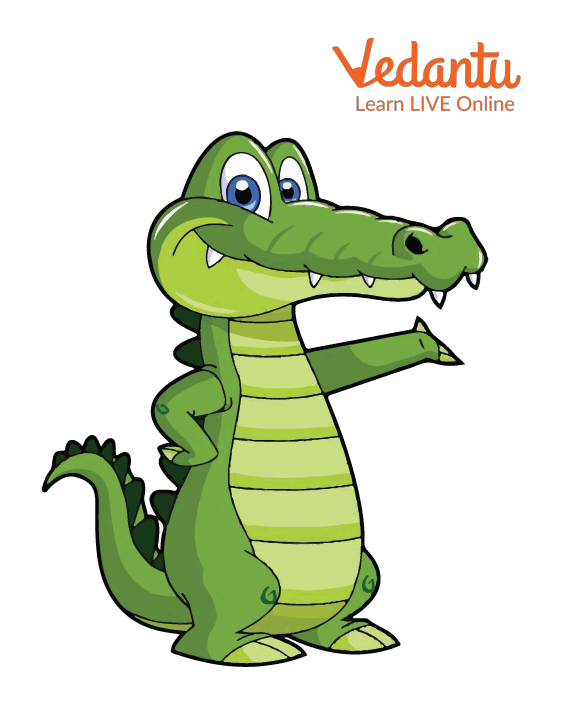
Crocodile
Interesting Facts about Crocodiles
Crocodiles have the strongest bite of any animal in the world.
They have fun by playing in streams, pushing sticks and riding on each other’s back.
Crocodiles sleep a lot and most of the time their eyes remain closed. They sleep for at least 17 hours a day.
They can survive for a long time without food. If we talk about what they eat, it includes fish, frogs, birds and other animals. Moreover, they steal food from other predators.
They don’t have a bulletproof body and their skin is dry and scaly.
Crocodiles are not found in Europe and Antarctica.
The Nile crocodile is always featured in cartoon and Tarzan movies.
Dwarf crocodiles are the smallest breed.
Crocodiles produce tears when they eat.
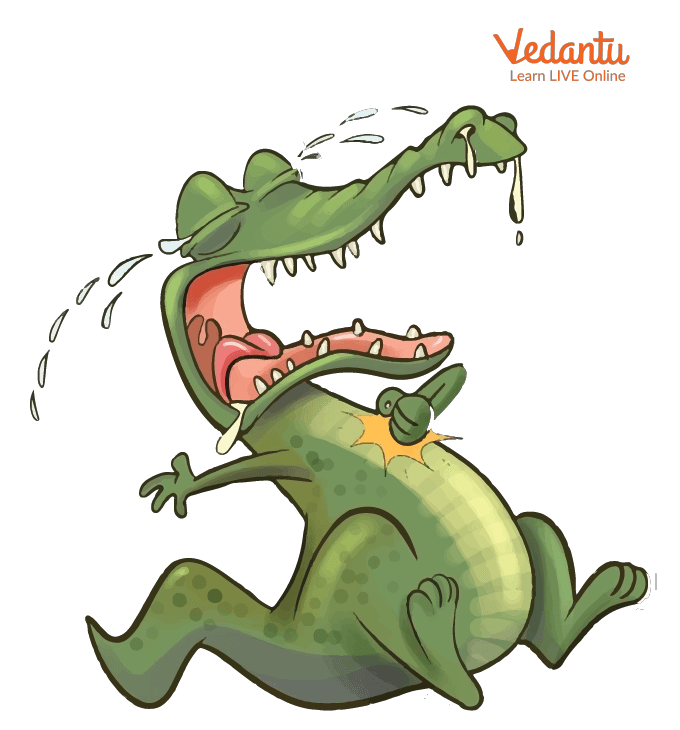
Crocodile Tears
Some Features of Crocodiles
The following are some of the most common and must-know crocodile features.
Crocodiles have thick leathery skin.
Their eyes are present on top of their head.
They have cone shaped and sharp teeth. All of them have similar toothy smiles.
They have large broad bodies, short legs and long muscular tails.
They are good predators.
Their tongue is attached to the bottom of its mouth so it never moves.
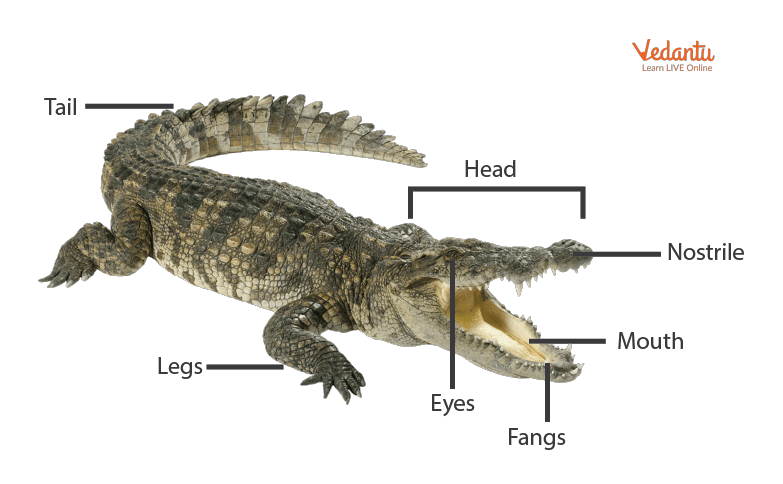
Parts of a Crocodile
Characteristics of Crocodiles
Crocodiles have the following characteristics.
Crocodiles are fast swimmers.
They have 60-110 teeth and replace 6000 teeth in their lifetime.
Their lifespan is 30-70 years.
Crocodiles have good night vision.
Their sense of smell is very strong.
Crocodiles use their teeth to hold their prey, not to chew it.
They have powerful jaws.
Crocodiles don't chew their food.
Crocodiles are excellent hunters and predators.
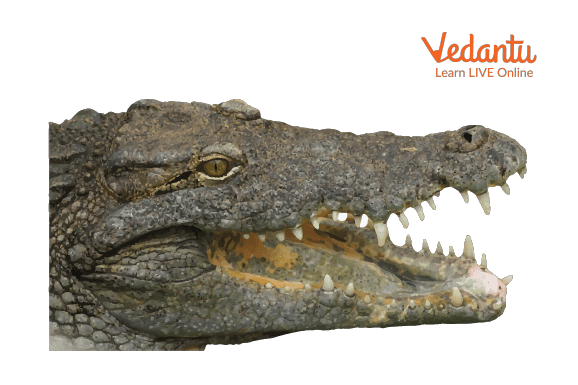
Crocodiles have Powerful Jaws and Teeth
What Is Unique about Crocodiles?
Crocodiles have a unique body. Their eyes, ears and nostrils remain above the surface of water but most of the body lies in the water. This makes them easily capture their prey. The largest reptiles on earth are saltwater crocodiles. Crocodile bite is stronger and more powerful than a great white shark. Crocodiles eat fish, frogs, birds, reptiles and even large animals like hippo and buffalo
Solved Questions
1. What do crocodiles eat?
Ans: They eat fish, turtles, birds and small animals.
2. Do crocodiles have tongues?
Ans: The tongues of crocodiles are not free, but held in place by a membrane that limits movement. Therefore, they are unable to stick out their tongues.
3. How do crocodiles breathe?
Ans: Crocodiles breathe mostly through their mouths.
Summary
Crocodiles play an important role in the environment. When they are adults, they
regulate prey population and prevent their overcrowding. Crocodiles also create habitats for other animals by burrowing and making nests for them. They eat ailing fish in a higher proportion than healthy fish, thereby improving the common health of the fish stock.
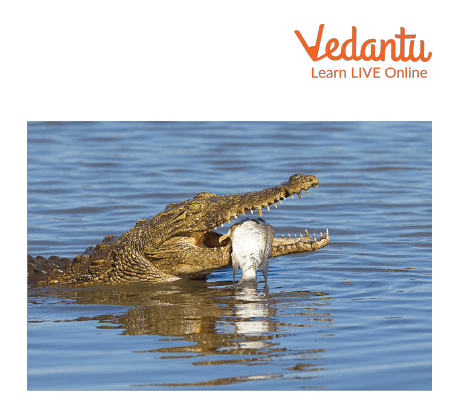
Crocodile Hunting Fish
FAQs on Interesting Facts about Crocodiles for Kids
1. What is the biggest type of crocodile in the world?
The biggest and heaviest type is the Saltwater Crocodile. These massive reptiles can grow up to 20 feet long and weigh more than 1000 kg, which is more than a small car!
2. How can you tell the difference between a crocodile and an alligator?
The easiest way to tell them apart is by their snout and teeth.
- A crocodile has a longer, V-shaped snout, and you can see some of its lower teeth poking out when its mouth is closed.
- An alligator has a shorter, U-shaped snout, and its lower teeth are hidden when its mouth is shut.
3. Why do crocodiles lie in the sun with their mouths wide open?
Crocodiles do this to control their body temperature. As cold-blooded animals, they rely on the sun to warm up. If they get too hot, they open their mouths to release heat and cool down, similar to how a dog pants.
4. What is a fun fact about baby crocodiles?
Baby crocodiles, known as hatchlings, make chirping sounds from inside their eggs to signal to their mother that they're ready to come out. The mother then gently digs them up and carries them to the water in her mouth for safety.
5. How long can a crocodile hold its breath underwater?
Most crocodiles can stay underwater for about 15 to 30 minutes. However, large Saltwater Crocodiles are experts at this and can stay submerged for over an hour by dramatically slowing their heart rate down to just a few beats per minute.
6. If a crocodile loses a tooth, does a new one grow?
Yes, they do! Crocodiles have a remarkable ability to replace lost teeth. Throughout their lifetime, a single crocodile can go through thousands of teeth. As soon as one is lost, a new one is ready to grow in its place, making sure their bite is always powerful.
7. Do crocodiles actually cry 'crocodile tears'?
While crocodiles do have tear ducts that produce tears, it's not because they feel sad. The tears are produced to clean and moisturise their eyes, especially when they've been on land for a while. The phrase 'crocodile tears' is used to describe fake sadness.
8. Why are crocodiles important for the environment?
Crocodiles are top predators and play a crucial role in keeping their ecosystem balanced. They control the populations of fish and other animals, which prevents any one species from becoming too numerous. This helps keep the rivers and wetlands healthy for all the animals living there.









